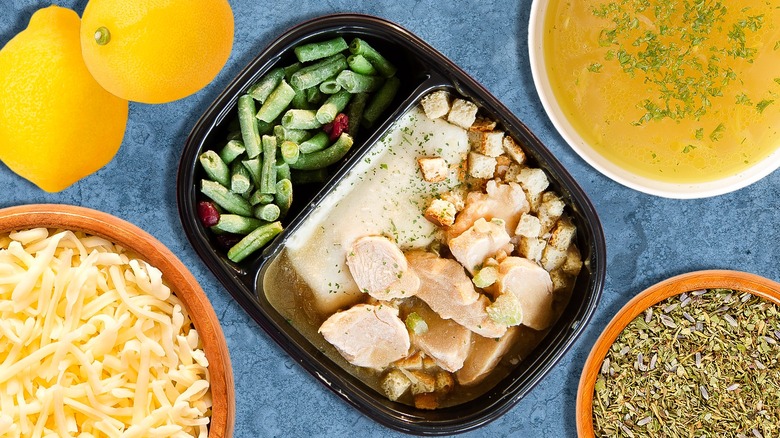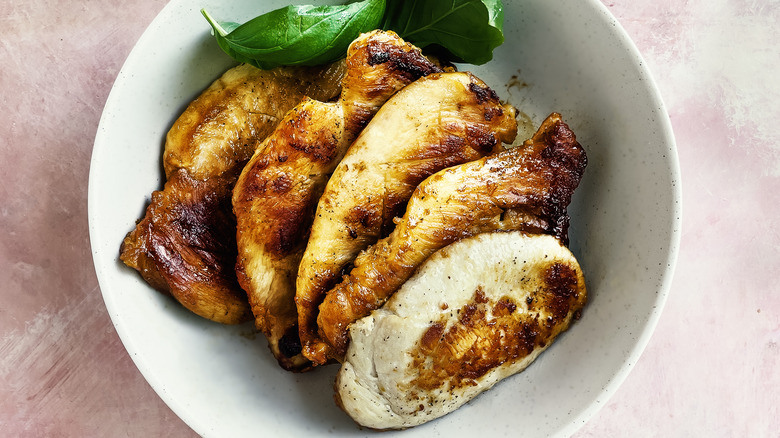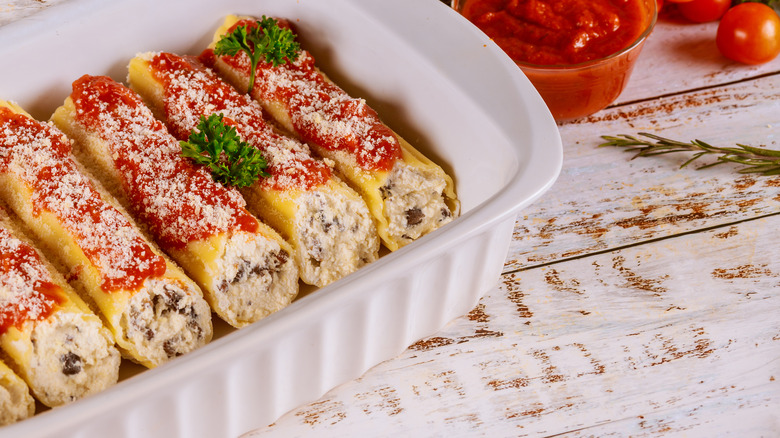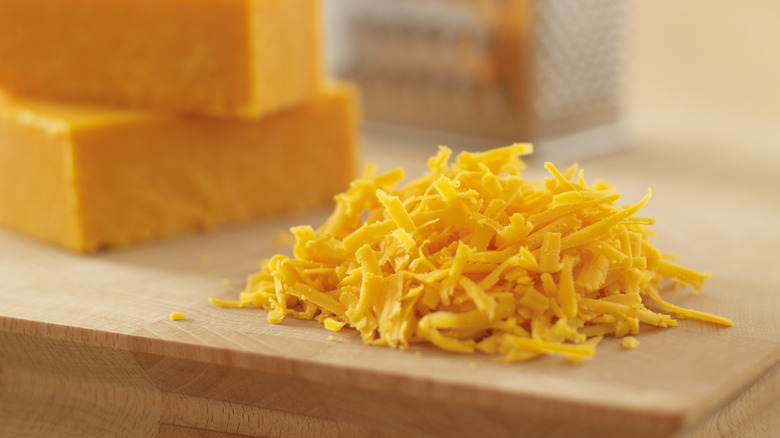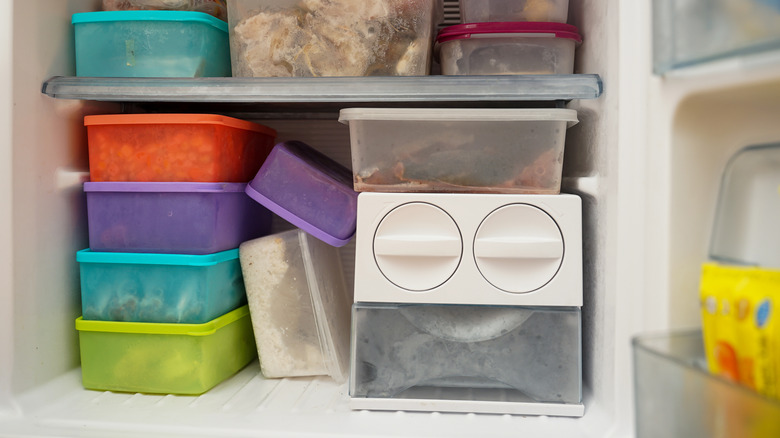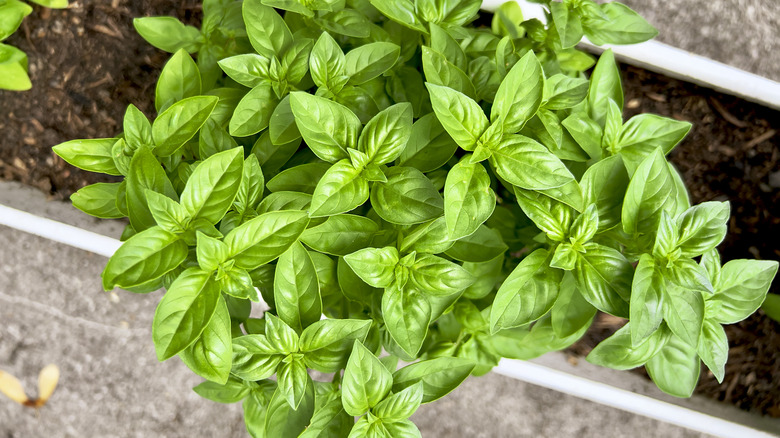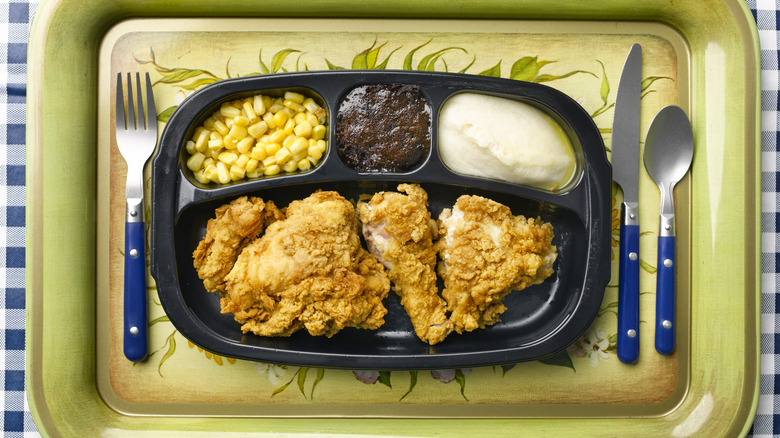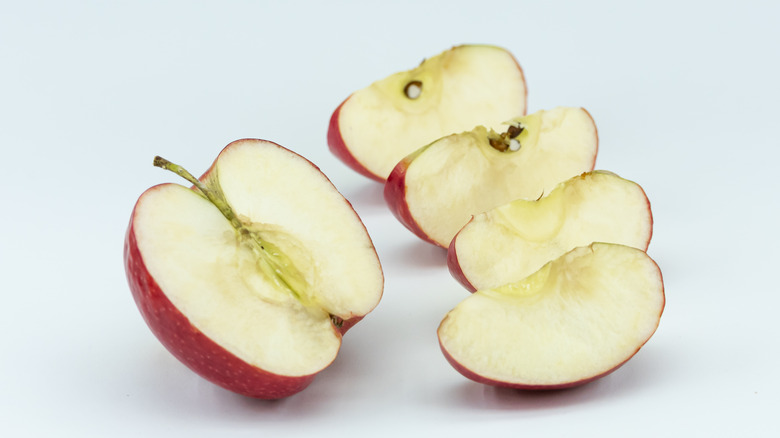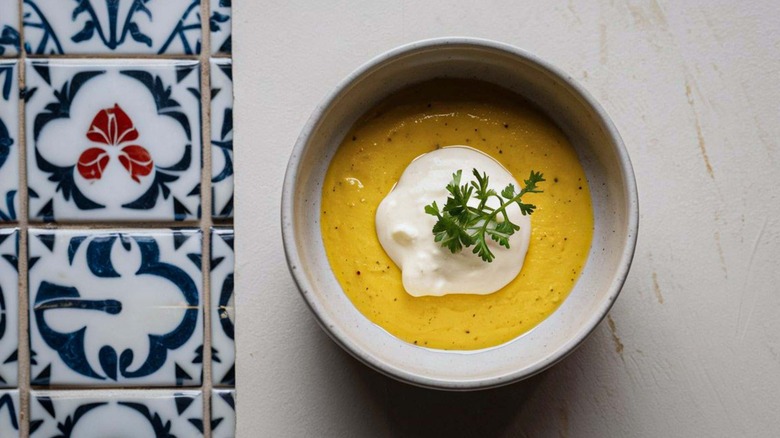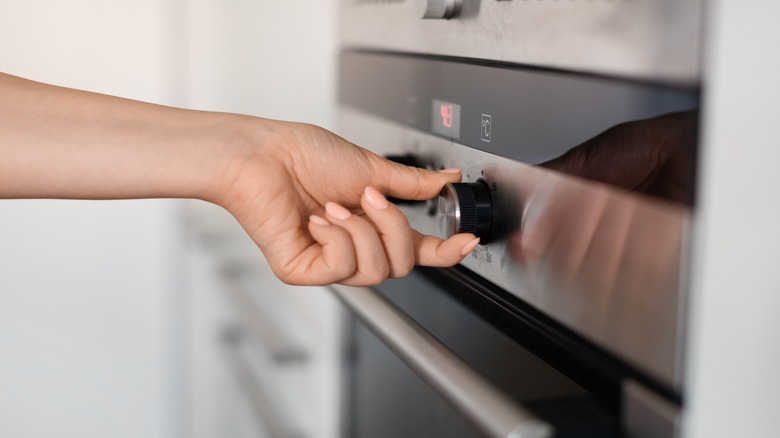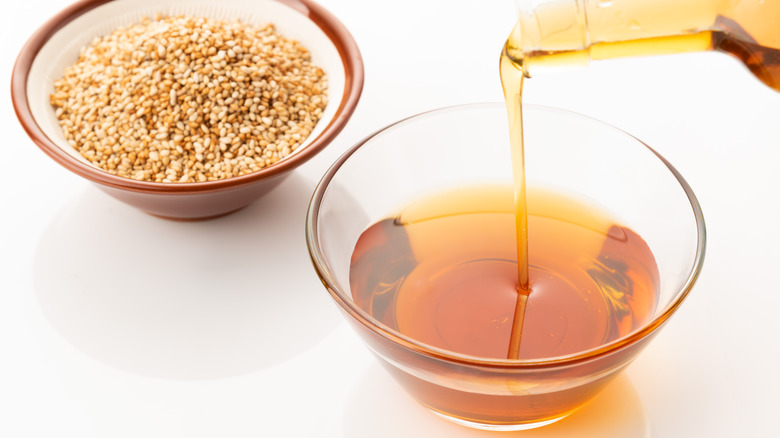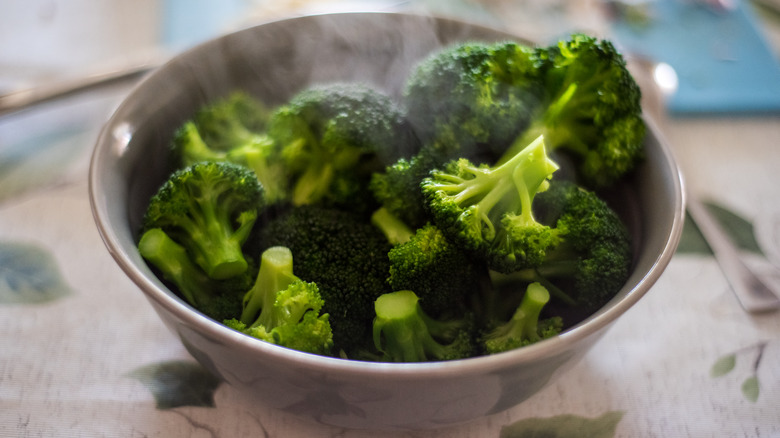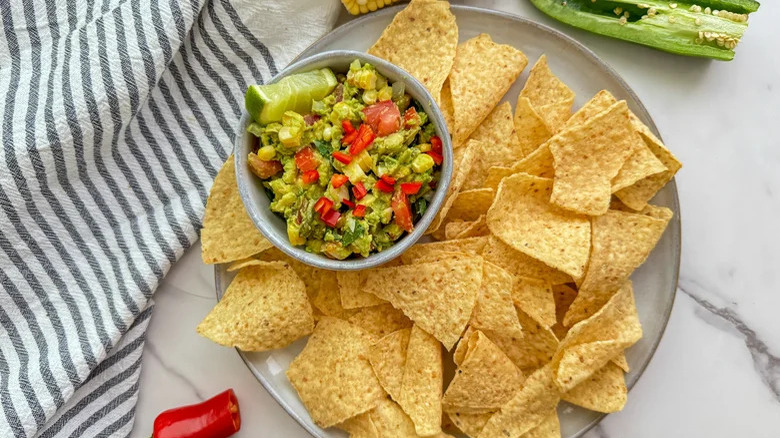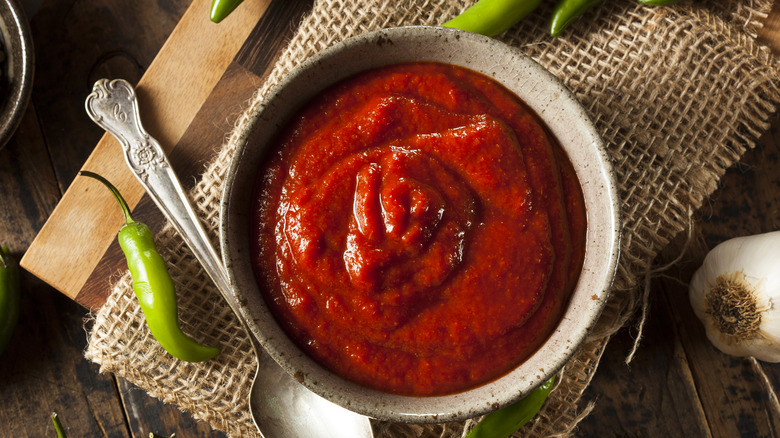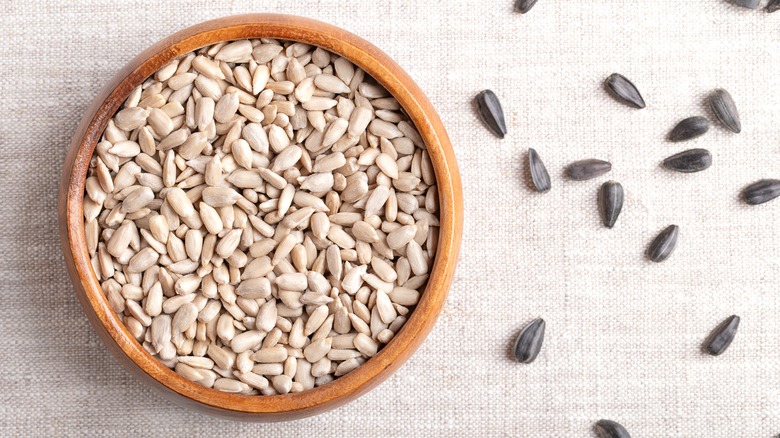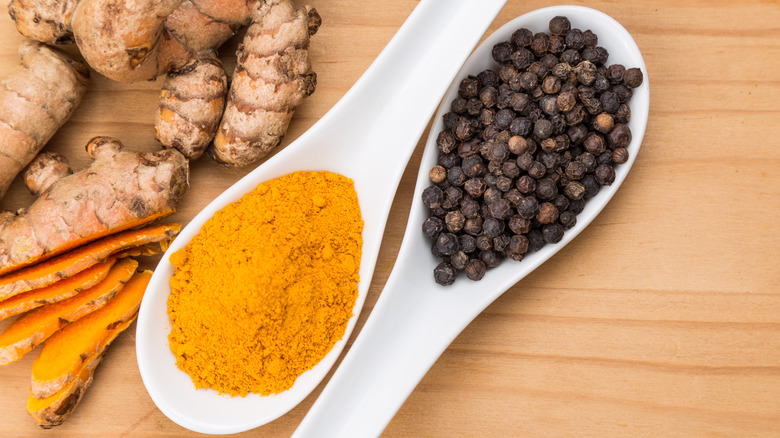15 Ways To Improve Frozen Dinners
Frozen meals are a convenient method to consume a meal. The reasons to have them stocked in the freezer may differ for each person, but overall, they're ideal for when you don't have time to cook a fresh meal from scratch, you're low on groceries, or you need to eat something within a few minutes. There are plenty of frozen dinner brands on the market with product options for a range of dietary needs like vegan, low sodium, gluten-free, and more. No matter what you have in the freezer, we'll share a few ways to improve frozen dinners to make the most of your next meal. We also sought the insights of some knowledgeable experts to ensure your frozen meal reaches its full potential.
Sunita Yousuf is the founder over at The Wannabe Cook, a website that posts recipes and cooking techniques for home cooks and foodies. Lisa Richards is a nutritionist, author, and creator of The Candida Diet. Eric Sornoso is the co-founder of Mealfan, which shares information on meal delivery services. "Improving frozen T.V. dinners can transform a quick meal into something more enjoyable," says Sornoso. Their valuable guidance can convert frozen foods into a more nutritious, filling, flavorful, or delectable option. Whether your particular dinner is bland, dry, not filling, lacks color, needs a nutritional boost, or you just want to give it pizzazz, you'll be able to find a recommendation or two to make it the best it can be.
1. Add in more protein
From legumes to meats, any number of proteins can give your frozen meal a filling and scrumptious upgrade. Lisa Richards advises adding a lean protein such as grilled chicken, tofu, or beans. Sunita Yousuf recommends precooked shrimp, chicken, or canned beans "to enhance nutritional value and make it more satisfying." If they're uncooked, you'll have to cook them ahead of time. You don't want to cook it with a frozen dish since they have different cooking times and temperatures. Once ready, stir the protein into the meal before you eat it.
But something like canned beans don't require any additional effort and offer "a quick, nutritious option that complements a variety of dishes," according to Yousuf. Simply open the can and mix it into your already-heated meal. While the protein increase can be a plus nutritionally, Yousuf says it "also adds variety in texture and flavor, making the dish more enjoyable and filling." This works on anything from adding shaved steak to frozen pizza to chicken in frozen pasta.
2. Read the instructions
Given that there are so many frozen meal options, sizes, and ingredients, it's important to consult the manufacturer's directions listed on your individual meal. You can't just guess or make up a time or cooking method. The directions have strict FDA and USDA guidelines to follow to ensure the safety of those eating the food. This includes food allergen labeling, ingredients, temperatures, cooking time, and more. It's important to view this information before opening and heating your meal to check if it suits your dietary needs.
This is also the time to consider if you want to bolster the meal with any additions, such as chicken, cheese, or sauce. Many frozen foods have microwave instructions, but others also have oven or toaster oven guidelines. This type of meal gives you more flexibility in the cooking method without having to rely on guesswork. For example, frozen manicotti can be warmed in the microwave, or you can place them in a baking pan to cook in the oven. Either way, you need to follow the directions since they can have different temperatures, times, or instructions.
3. Sprinkle on cheese
Whether your meal already has cheese or you want to top it off, it's a quick way to give your frozen dish a flavorful upgrade. When in doubt, supplement with a cheese that's in your dish. If your dish has goat cheese, that's an easy addition, as opposed to using some other cheese. You could mix and match queso, but this is purely up to your taste preferences and can also vary based on the ingredients in your dish. Sharp cheddar cheese can pair nicely with pepperoni or ham, or mozzarella often pairs up with tomatoes, like you'd find in a Caprese casserole.
Eric suggests garnishing a frozen meal with freshly grated Parmesan cheese just before serving. Adding cheese can be a simple method to improve frozen pizza. Simply sprinkle it on after the pizza is half-cooked to give it a melty upgrade. Frozen ravioli can get a cheesy advancement by mixing in ricotta or topping with grated Romano cheese. Skip the shredding and use a slice of cheese to instantly upgrade basic cooked veggies in the meal like cauliflower or broccoli. Giving a frozen meal prep dish a cheese garnish or mix-in can provide extra flavor and texture when it needs it most.
4. Make sure to consume it during its peak freshness
Alright so you read the instructions line by line, but something tastes, looks, or smells off. What went wrong? Much like other prepared and fresh foods, it has a window of when it's at its finest. You should check the best by date to confirm it's actually fresh. Make sure to look at the side or front of the outer packaging, as that's where you'll usually find the date. Some foods are pretty safe to eat shortly after the date, but the delay can still impact the taste and quality. For example, the food might get freezer burn or become dry.
The freshness can also change based on how frequently you open the freezer to expose it to a temperature higher than 0 F, which is when spoilage can start. Also, note if the packaging has any rips or tears. If this is the case, it's time to order a pizza because you should toss it altogether. It's no longer fresh after being exposed to the air, ice crystals, and odors.
5. Include fresh or dried herbs
Herbs can impart a lot of unique notes into a frozen dinner to give them a much-needed lift, and it's something all our experts agree on. The addition of herbs can help "improve not only the flavor but also the smell of a frozen meal," says Eric Sornoso. Introduce greens such as parsley, cilantro, oregano, or basil. Chop and sprinkle them on top of the dish after heating and before serving. Lisa Richards shares that fresh herbs like parsley or cilantro can also add antioxidants. "These small enhancements transform a basic T.V. dinner into a more balanced, nutrient-dense meal that supports overall health," Richards says.
You may use fresh or dried based on what you have available. Frozen meals are all about convenience, so it doesn't make much sense to drive out of your way to the store to grab fresh herbs if you have dried them at home. But you can absolutely do so if you'd like. Freeze-dried alternatives "offer the same flavor burst without washing and chopping," according to Sunita Yousuf. No matter which you choose, herbs can "infuse your meal with vibrant flavors, transforming a bland, pre-made dish into something that tastes more homemade and delicious," says Yousuf.
6. Switch up the plating
Frozen meals are heated and served in their packaging, which can be small and challenging to eat out of. Transform the look of it entirely by plating the food on your favorite dish. There are plenty of plating tricks to add personality to meals without adding more ingredients, although you can do so. Pick a bowl or plate that will fit the food and give you room to eat, rather than being restricted to the sides of the plastic container. Consider the color of the dish to complement the meal or offer a contrast.
You could even establish patterns or shapes, like swooshing frozen mashed potatoes or putting veggies in a vertical line. Depending on the size of the plate, you could factor in negative space to give it elegance. You could also serve varying components in different dishes like placing the green beans in a small bowl and then arranging the meat and potatoes on a plate. Think about these ideas for your next frozen dinner to give it a fresh look.
7. Eat a side of fruit
One of the ways to improve frozen dinners is to serve it with a side of fruit. You'll get a serving of fruit, and you probably have some at home whether it's an apple, banana, orange, or something else. This will incorporate the fruit's nutritional components like the fiber, antioxidants, and vitamin C in an apple, but also makes the meal more dense and filling. You could even opt for canned or fruit, too. Just mind any syrups or dressings since you don't want to pile on added sugar.
There's a lot of range in presentation and how you cut the fruit, from slices to cubes to fun cutouts, to make any meal more enticing. Keep it simple with whole or chopped fruit or make a fruit salad, such as a crisp watermelon and feta salad. This dish brings a harmony of sweetness and salt that can upgrade your frozen dinner experience. It's still mainly fruit but there's also the creamy feta and freshness with the addition of mint. You might want to try a couple of the best fruits for grilling for layers of sweet and smoky flavors. Try it with apricots, pears, or pineapples.
8. Bring on the sauce
Have you ever eaten a frozen meal that lacked moisture or flavor? Or perhaps it was supposed to have sauce, but it was so minuscule, it left you wanting hungry for more. That happened to us recently when eating turkey meatballs and pasta dinner where the sauce was essentially non-existent. Try loading up on your preferred sauces to boost the flavor of any frozen meal. Tomato and pesto are common top choices that you likely already have in the pantry or fridge that taste yummy with pasta, pizza, or mixed into veggies. Barbecue sauce complements meats from your frozen meal.
The rich creaminess of Béarnaise sauce works delightfully poured on top of meat or veggies. Mornay is a sauce made with cheeses such as Gruyère or Parmesan, butter, flour, and a few other ingredients, making it a thick, nutty sauce to pour over frozen mac and cheese or seafood. For a salty boost, mix oyster or hoisin sauce directly into the food, rather than leaving it on top. You'll often find these in Asian cuisine, but you can include them whenever you want a hint of umami.
9. Be strategic about how you heat the food
There are many heating mistakes everyone makes with frozen food, but they can be easy fixes. One big one is not warming frozen vegetables correctly that might be included in your meal. While the package has instructions, you can always heat things like vegetables additionally because they tend to come out soggy or lacking in flavor. Another top mistake is not checking the internal temperature of the meats. The USDA advises using a food thermometer after cooking to ensure frozen meat and poultry are fully cooked and safe to eat.
Eric Sornoso recommends cooking frozen meals at a slightly higher temperature, just a few degrees higher than the directions state. "This helps prevent sogginess and adds a slight crispiness to the foods, improving their texture and appearance," says Sornoso. If you're concerned about cooking the frozen food container at a higher temp, wedge the food and place it on a baking dish or pan.
10. Give it richness with a bit of fat
Adding a fat element can bring depth and enhance the flavor and texture of your frozen dinner. Even "a few drops of quality olive oil or a piece of butter make a huge difference to the taste and mouthfeel of pasta or rice dishes," according to Eric Sornoso. You can use a standard unflavored variety or mix things up with something like an herby compound butter or a garlic-infused olive oil. Just add the element after your meal is fully heated. Oils will incorporate without a hitch, and butter or coconut oil can easily melt against the heat.
Butter works nicely with vegetables and starches like rice or quinoa bowls. Unless your meal lacks salt, salted butter might tip your meal to the overly salty side. Pick unsalted butter to give the creaminess without the sodium. Sesame oil imparts a nuttiness that not only works on Asian dishes but on veggies, too. We love it on broccoli or sautéed spinach to take it to the next level. No matter which you choose, you don't need a lot to make a difference.
11. Don't skimp on the veggies
"Increasing the nutrient density of frozen T.V. dinners is easy with a few simple additions," says Lisa Richards. Veggies offer plenty of pep to frozen meals, no matter what you're eating for dinner. And it just so happens that there are loads of vegetables to choose from. Richards recommends incorporating fresh or steamed vegetables like spinach, broccoli, or bell peppers to boost vitamins, minerals, and fiber in the frozen dinner.
Eric Sornoso suggests adding freshly steamed broccoli or spinach directly into dish's the sauce which can improve the nutritional value as well as the mouthfeel. This method provides "great taste, fiber, an explosion of colors, and a better-than-expected crunch that improves the meal," says Sornoso. Heat the meal and the veggies separately — as they have unique cooking times — and then mix them into the dish. Keep chunkier veggie pieces or dice them for small, less noticeable bites. Since you're incorporating the vegetables into the frozen meal, keep the seasoning minimal or similar to what's in the food. You don't want a funky mashup of flavors.
12. Pair it with other sides
Whether you think you'll still be hungry or you just want to integrate other food components, adding supplemental sides can be a great way to improve frozen dinners. There's no shortage of the best side dishes to choose from either. Rice pilaf, potato salad, or mashed potatoes are delightful options for a more filling meal. Grilled corn and avocado guacamole with corn chips can complement your meal without feeling overly stuffed.
You could also opt for a vegetable-based side like glazed carrots or grilled asparagus if you want something vibrant and nutritious. To save time, opt for frozen, microwavable veggies for something that doesn't require sautéing or baking. A soup or salad are common sides that you can find in restaurants, so apply the idea at home. Canned soup or bagged salads are quick and easy but still refresh the meal. For something refreshing and colorful, make a turnip salad with lemon-herb dressing. Any of these sides are perfect when you want to bring more variety to your dinner.
13. Mix in something spicy
A spicy element can be exactly what your frozen dish needs, whether you want to sprinkle it atop the entire thing or mix it into one of the meal components. Luckily, there are loads of ways to include heat such as cayenne pepper, chili pepper flakes, hot sauce, fresh jalapeños, gochujang, salsa, the list goes on. And sometimes the pairings create themselves, like adding store-bought salsa or hot sauce to a verde chicken bowl.
You could add sriracha to frozen mac and cheese for a spicy, colorful boost that easily mixes into the dinner. Hot sauces, sriracha included, have vinegar which can brighten bland meals with a tangy and hot lift. Use up kimchi by including it in frozen fried rice or to season frozen vegetables. The fermented cabbage brings a blend of tanginess, spice, umami, and texture to your food. Pick your heat method based on its spice level and your desired texture. You might not want the chunkiness of chopped chiles, but cayenne powder might do the trick.
14. Add some seeds or nuts
"Consider topping the meal with a handful of nuts or seeds, like almonds or sunflower seeds, for healthy fats, protein, and additional fiber," says Lisa Richards. This multi-purpose addition also makes your meal more filling and dense. Some meals might have nuts or seeds, like chicken cashew curry or salmon sesame rice bowl, so this makes an easy complement.
Toast ground flax seeds for a versatile, crunchy topping that can provide nutrients like protein, fiber, thiamine, copper, manganese, and omega-3 fatty acids into your dinner. If you don't want a full nut, like almond or cashew on your dish, you can always chop it into smaller pieces or serve it on the side. You can also find seed or nut powders at the store, which can be mixed directly into the meal after it's heated. Start with a little, mix fully, and then spoon in more as needed, since powders and certain seeds can absorb a lot of liquid.
15. Load up on spices
Jazz up frozen dinner with some spices. There are plenty of options to choose from, which you can customize based on the meal or how you like your food. Eric Sornoso recommends smoked paprika to infuse character into otherwise bland recipes. Take a look at the ingredients of the meal and see if it includes any spices. Simply add more of them to bolster the taste. If your frozen teriyaki bowl has turmeric and black pepper or your curry has curry seasoning and cinnamon, those are easy choices to mix in.
You might want to consider tips to integrate more flavor when cooking with spices, such as toasting them for a couple of minutes on a pan. Toasting them provides more aroma and gives them more dimension, which can be most welcome for frozen food, especially if it's not your favorite meal. For more nuanced flavors, test out a meal with your own spice blend. Whichever spices you select, cook the food first so it's easy to work with (as in not a frozen rock), then mix in the spices until fully incorporated.
